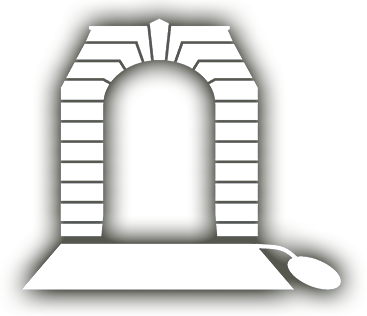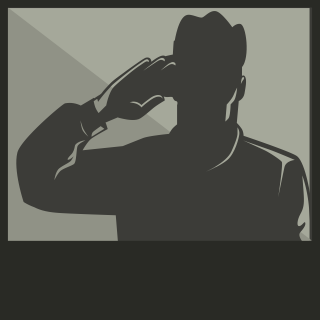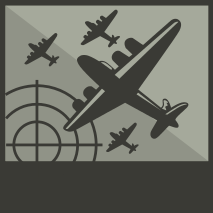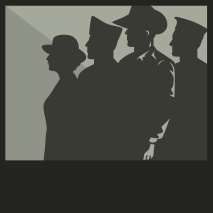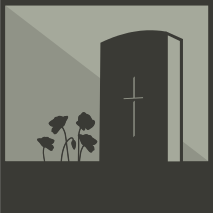BULLWINKEL (STATHAM), Vivian
| Service Numbers: | F31029, VFX61330 |
|---|---|
| Enlisted: | 20 May 1941 |
| Last Rank: | Captain |
| Last Unit: | General Hospitals - WW2 |
| Born: | Kapunda, South Australia , 18 December 1915 |
| Home Town: | Burwood, Burwood, New South Wales |
| Schooling: | Nursing Training, Broken Hill |
| Occupation: | Nurse |
| Died: | Natural causes , Perth, Western Australia, 3 July 2000, aged 84 years |
| Cemetery: |
Perth War Cemetery and Annex, Western Australia |
| Memorials: | Ballarat Australian Ex-Prisoners of War Memorial, Bangka Belitung Islands 8th Australian Division 2nd AIF Memorial, Bicton Vyner Brooke Tragedy Memorial, W.A., Campbell Sister Vivian Bullwinkel Memorial, Devenish Australian Nurses Memorial Centre Plaque, Kapunda Dutton Park Memorial Bullwinkel Memorial, Kapunda Sister Vivian Bullwinkel and Nurses Memorial Plaques, Kapunda Soldiers Memorial Park, Kapunda WW2 Nurses and Servicewomen Memorial Plaque, Russell Sister Vivian Bullwinkel Memorial Plaque |
World War 2 Service
| 20 May 1941: | Enlisted F31029, General Hospitals - WW2 | |
|---|---|---|
| 8 Aug 1941: | Enlisted Australian Army Nursing Service (WW1), Nursing Sister, VFX61330, AAMC Drill Hall, Victoria | |
| 7 Dec 1941: | Involvement Australian Army Nursing Service (WW1), Nursing Sister, VFX61330, 10th Australian General Hospital | |
| 12 Feb 1942: | Embarked Australian Army Nursing Service (WW1), Sister, VFX61330, 2nd/13th Australian General Hospital, Embarked Ship - Date and Place of Departure: SS Vyner Brooke, 12/02/1942, Singapore, (with 65 other nurses, and civilians); to Japanese Aircraft Attack - sinking disaster - SS Vyner Brooke - Date and Place: 14/02/1942, Bangka Strait (by Bangka Island); (AWM) The Sinking of the SS Vyner Brooke. | |
| 15 Feb 1942: | Imprisoned Malaya/Singapore | |
| 30 Sep 1947: | Discharged Captain, 2nd/13th Australian General Hospital | |
| 30 Sep 1947: | Discharged F31029, General Hospitals - WW2 |
OUR SINGAPORE NURSES
Emotional Welcome As Gallant Women Return
Fremantle, Western Australia; The Australian Women's Weekly
Saturday; 3 November 1945, Page 19.
OUR SINGAPORE NURSES
BY: Josephine O'Neill
No legendary figures, but ordinary women, you, who died
Facing the water, last glance each to each
Along the beach, leaving your bodies to the accustomed surf
Your hearts to home
No legendary figures, but ordinary women, you, who lived
Holding the spirit, through the camps slow slime
Unsoiled by time ...
Bringing your laughter out of degraded toil
As a gift to home
As ordinary women, by your dying you fortify the mind
As ordinary women, by your living you honor all mankind.
TROVE: http://nla.gov.au/newspaper/article/55465571
Submitted 5 November 2018 by Daniel Bishop
Biography contributed by Faithe Jones
The world knows the horrific details of the tragedy of what is known as the Radji Beach massacre, mainly through the detailed testimony of Sister Vivian Bullwinkel, the sole survivor of the Australian Army Nurses who were executed on that fateful day, 77 years ago on 16 February 1942.
Lieutenant Colonel Vivian Bullwinkel VFX61330 was born on 18 December 1915 in Kanundra, South Australia.
She trained as a nurse and midwife at Broken Hill, New South Wales, and began her nursing career in Hamilton, Victoria, before moving to the Jessie McPherson Hospital in Melbourne in 1940. In 1941, wanting to enlist, Bullwinkel volunteered as a nurse with the RAAF but was rejected for having flat feet. She was, however, able to join the Australian Army Nursing Service; assigned to the 2/13th Australian General Hospital (2/13th AGH), in September 1941 she sailed for Singapore.
After a few weeks with the 2/10th AGH, Bullwinkel rejoined the 13th AGH in Johor Baharu. Japanese troops invaded Malaya in December 1941 and began to advance southwards, winning a series of victories and, in late January 1942, forcing the 13th AGH to evacuate to Singapore. But the short-lived defence of the island ended in defeat, and, on 12 February, Vivian and 64 other Australian Army Nurses boarded the SS Vyner Brooke to escape the island.
It is history that the ship was sunk off Bangka Island on February 14, 1942. She, along with 52 of the Nurses, landed safely on various parts of the Island. Bullwinkel, 21 other nurses and a large group of men, women, and children made it ashore at Radji Beach on Banka Island; they were joined the next 2 days by about 100 British military personnel. The group elected to surrender to the Japanese, and while the civilian women and children left in search of someone to whom they might surrender, the Nurses, soldiers, and many wounded waited on the beach.
"The chief engineer [of the ship] came back with about 15 Japanese," Sister Bullwinkel later wrote. "The British soldiers... were taken around a small point out of sight. There was no sound. Then the Japanese came back wiping their bayonets. We [the nurses] just looked at each other. We didn't have any emotion about it.
"The Japanese indicated we should go into the sea. We walked into the sea. We knew what was going to happen. All I can remember thinking was, 'I am sorry mother will never know what has happened to me but it will be nice to see dad again'.”
Sister Bullwinkel, who was shot in the abdomen, feigned death: "It sort of penetrated that I wasn't dying right there and then. I stayed low until I couldn't stay low any longer." She was the only one of the 22 to survive.
She hid with Private Kingsley, a wounded British soldier, for 12 days before deciding once again to surrender. They were taken into captivity in Muntok, but the private died soon after.
Bullwinkel was reunited with survivors of the Vyner Brooke. She told them of the massacre, but none spoke of it again until after the war lest it put Bullwinkel, as witness to the massacre, in danger. Bullwinkel spent three and half years in captivity; she was one of just 24 of the 65 nurses who had been on the Vyner Brooke to survive the war.
Bullwinkel retired from the army in 1947 and became Director of Nursing at Melbourne's Fairfield Hospital. She devoted herself to the nursing profession and to honouring those killed on Banka Island, raising funds for a nurses' memorial and serving on numerous committees, including a period as a member of the Council of the Australian War Memorial, and later president of the Australian College of Nursing.
During her later years at Fairfield Sister Bullwinkel organised a rescue mission to evacuate Vietnamese war orphans from Saigon and supervised their convalescence before adoption to Australian families.
Her many honours included the Florence Nightingale Medal, Officer of the Order of Australia, Member of the Order of the British Empire, 1939-1945 Star, Pacific Star, War Medal and Australian Service Medal. Vivian returned to Banka Island in 1993 to unveil a Memorial to the Nurses who had not survived the war
Sister Bullwinkel, who retired from the army in 1947 and later achieved the rank of lieutenant colonel in the Citizens Military Forces, married Colonel Francis Statham in 1977. She died on July 3, 2000, aged 84.
https://www.facebook.com/permalink.php?story_fbid=2134833189910290&id=983774011682886&__tn__=K-R
Reference: www.awm.gov.au/people/P10676383/
The Canberra Times
Public records
Biography
Vivian Bullwinkel, sole survivor of the 1942 Banka Island massacre, was born on 18 December 1915 at Kapunda, South Australia.
The following extract of Sister Florence Casson's (KIA) record, details the events surrounding the Bangka Island massacre.
The 2/13th Australian General Hospital of the Australian Army was sent to Singapore (September 1941) but was re-located to Malaya in November 1941.
With allied defeat imminent on the island of Singapore in early February, 1942, Australian Army Command ordered the evacuation of the nursing sisters from the three Australian hospital units there. The 2/13th AGH, the 2/10th AGH and the 24th Casualty Clearing Station. All the sisters left Singapore on 12th February 1942 on board the British Merchant Ship “SS Vyner Brooke”. The ship was carrying the 65 sisters of the three Australian hospital units and some 250 other evacuees. These included many wounded British soldiers, British civilian government staff and their families and some Dutch nationals. The Vyner Brook was attacked and sunk by Japanese bombers on the 14th February 1942 very close to the southern coast of Sumatra.
Three Australian nurses were killed in the bombing attack. Some reports state that Sister Casson was severely wounded during the attack, but still reached the shore.
Stranded on a beach of Bangka Island located off the Sumatran coast (Present day Indonesia), with no food or medical supplies the group was forced to surrender to the Japanese forces. On the 16th of February 1942 fifteen Japanese soldiers divided the survivors by gender into two groups. The men were marched to an area out of view. The nurses heard a quick succession of shots before the Japanese soldiers came back, sat down in front of the women and cleaned their bayonets and rifles.
Twenty two captured Australian army nursing sisters and one British civilian lady were forced at bayonet point by Japanese soldiers to wade into the sea, leaving ten or twelve stretcher cases on the beach. Fully aware of their fate, the nurses put on a brave face. Their Matron, Irene Drummond, called out: "Chin up, girls. I'm proud of you and I love you all." They were then ruthlessly machine gunned by these troops. Only one woman, (Captain) Sister Vivian Bullwinkle (born Kapunda, South Australia, Army Number VFX 61330) survived, after feigning death and with a bullet through her spleen, she was later held as a POW for the rest of the war.
The bodies of the 22 women shot dead (including the British civilian), was never found. They are commemorated on the Singapore Memorial located in the Kranji Commonwealth War Graves Commission Cemetery.
A portrait of Sister Vivian Bullwinkel by renowned war artist Ivor Hele hangs in the Kewsick Barracks Officers Mess
For more reading click Australia War Memorial link on left of this page ..
Biography contributed
Contributed by Central Yorke School, South Australia
"When I was hit, I can remember thinking it's like the kick in the mule and then I went down. I was very surprised to find myself still alive. I just laid there and eventually let the waves bring me in." - Vivian Bullwinkel's recollections of the massacre on Radji Beach
Vivian Bullwinkel was born on the 18th of December 1915 in Tanunda, South Australia to George and Eva Bullwinkel (nee Shegog), before her family moved to Broken Hill, New South Wales (Australian War Memorial).
Her father had migrated to Australia from Essex, UK, in 1912 when he was 18-year-old. George previously worked as a jackaroo on Mutooro station, south of Cockburn on the NSW/SA border, until he met his wife Eva and they moved in to Broken Hill. George took up a clerical post with a mining company.
While they were living in Broken-Hill her parents had another child, John in 1920. John also enlisted for World War II in 1941 and went to Africa. He broke his leg when he was parachuting as a result of enemy action. He returned from war and married, he died in 1966.
Vivian later moved to Adelaide and lived with her grandparents; her grandfather Willian John Shegog was a member of the South Australian Police Force (Hayward and Lemon, 2019).
When Vivian finished school, she trained as a nurse and midwife in Broken Hill and later began nursing at the Kia-Ora Hospital in Hamilton, Victoria. She later moved to Melbourne to work in the Jessie McPherson Hospital in 1940 (Australian War Memorial, n/d).
On the eighth of August 1941 she volunteered as a nurse with the RAAF. She had to undertake lots of tests and was originally rejected because she had flat feet. She was later able to join the Australian Army Nursing Service and become a member of the 2/13th Australian General Hospital (2/13th AGH). In September of 1941 she hopped on a boat and sailed to Singapore (Australian War Memorial, n/d).
The 2/13th Australian General Hospital was set up in Singapore for a few weeks before it was relocated to Johor Baharu, Malaya (now known as Malaysia) the hospital was an unfinished mental asylum but with the Japanese invading Malaya they were forced to return to Singapore in January 1942. The Japanese invaded Malaya on the 8th of December 1941, the day after they had attacked Pearl Harbor in Hawaii (Saavedra, 2021).
Shortly after the nurses returned to Singapore, the Japanese invaded the Johor Strait on February 8th of 1942. The Australian army was concerned that Singapore would be attacked next and fall to the Japanese. On the 12th of February the Australian nurses were ordered to evacuate, taking wounded soldiers with them (Saavedra, 2021).
Vivian Bullwinkel and 64 other Australian nurses were among the 181 people that boarded the SS Vyner Brooke., which was the last boat to leave Singapore before it fell to the Japanese (Saavedra, 2021).
After just two days on the boat, it was bombed and sunk by Japanese aircraft (Saavedra, 2021).
Beautiful sunny morning, calm sea, and anchored very pretty island. Peacefulness disturbed as planes flew over and machine-gunned boat, all took to lower deck as pre-arranged, but raid all over and much discussion on planes sinking us and enemy aircraft. Took up anchor and steamed along. 2 pm air raid siren. All down to lower deck and flatten down. Six planes attacking once more, bombs hit, second, third time, third bomb below the water line. Whistle for all on deck to take to lifeboats. -Vivian's diary entry on the day they were hit on the 55 Vyner Brooke
The survivors of the bombing made it ashore to Bangka Island beach after being in the water for between 8 to 65 hours. There were 150 survivors that made ashore to the beach. Including were people from the SS Vyner Brooke and also people from other boats that been sunk (Saavedra, 2021).
The Japanese got to the beach on the 16th of February 1942 and split up the male survivors who were then shot and stabbed. The 22 Australian nurses and 1 British soldier were forced to wade in the ocean before being shot from behind. The only two people to survive were Sister Vivian Bullwinkel and a British soldier. Vivian survived, although wounded, by pretending to be dead until the Japanese left. They survived in the jungle for 12 days before surrendering (Saavedra, 2021).
Vivian and the British solider walked to a Japanese prisoner of war camp and were allowed in on the 28th of February in 1942. After just a few days in the war camp Vivian found out that the British soldier had died. When Vivian got to the war camp, she saw her friend Wilma. They were delighted to see each other. Wilma had also been a nurse. They were beaten and sometimes made to stand in the sun for up to 12 hours without a hat. She continued to help others with their injuries and her and the other nurses there would use what they had to help and treat the other inmates. "We had nothing, literally nothing to care for our patients with," Vivian recalls. "The hospital [was] just a hut, roof-leaf, earthen floor and bamboo and bench on a side. No mattresses or linen, or anything like that. Nothing." Vivian was liked by a lot of the other POW's. Vivian lived in the camp for three and a half years and all the other POWs admired her courage (Saavedra, 2021).
In December 1946 she gave a testimony to the Tokyo War Crimes Tribunal about what she witnessed on Radji Beach. Her testimony led to the trial of 26 Japanese soldiers. However, the commander that ordered the massacre escaped the consequences by committing suicide in his cell.
Vivian could not face working in Japan with the British Commonwealth Occupation Force (BCOF), so she decided to become a civilian nurse once again. She retained her position at the Heidelberg Military Hospital in Melbourne. She became assistant matron and continued to care for Australian Service men from 1955 to 1970. She was the Director of Nursing at the Fairfield Infectious Diseases Hospital in Melbourne. While she was at Fairfield, she organised a rescue mission to evacuate Vietnamese children war orphans from Saigon (Ho Chi Minh City) and supervised them before Australian families adopted them (Department of Veterans' Affairs, n.d).
Vivian married Colonel Francis West Statham OBE, ED and changed her last name to Statham. Francis also served in the Second World War. And then moved to Perth where she lived and then retired in 1997 (The Australian Women's' Register, 2020). She lived a life full of great challenges, duty and joy. She died in 2000 after having a heart attack (Zinn, 2000).
Vivian's eventful army service saw her receive lots of well-deserved awards, including Officer of the Order of Australia in 1993, Member of the Order of the British Empire in 1973, Associate Member of the Royal Red Cross in 1947 as well as the Florence Nightingale and the following service medals - 1939- 45 Star, Pacific Star, the Australian Service Medal 1939-45, Efficiency Award, and the War Medal (Wikipedia, n.d).
Vivian, who initially was rejected from volunteering for the war cause because of her flat feet, persevered to become a survivor of her ship being bombed to being one of two survivors of a beach massacre then surviving in the jungle for 12 days before getting tortured in a Japanese prisoner of war camp to courageously giving testimony at the war crimes tribunal. Even through all these horrendous events going on around her, she also embodied the mateship of the ANZAC spirit as she was admired by all the other nurses and by everyone in the POW camp. When Vivian was 84 years old, she died because of a heart attack; she lived a very fulfilled life.
Bibliography
Awm.gov.au. (2016). Lieutenant Colonel Vivian Bullwinkel. [online] Available at: https://www.awm.gov.au/co1lection/P10676383.
My Tributes. (n.d.). Vivian Bullwinkel I Australian nurse, war hero, legend. (online] Available at: https://www.mytributes.com.au/article/vivian-bullwinkel/4256659/.
Saavedra, S.M., BSN and R.N. (2016). Vivian Bullwinkel: The Nurse Who Survived Hell. [online] Nurseslab . Available at: https://nurseslabs.com/vivian-bullwinkel nurse-survived-hell/ . ·
Wikipedia. (2022). Vivian Bullwinkel. [online] Available at: https://en.wikipedia.org/wiki/Vivian Bullwinkel#Honours
Melbourne, N.F. for A.W. and T.U. of (n.d.). Bullwinke/, Vivian - Woman - The Australian Women's Register. [online]'www.womenaustralia.info. Available at: https://www.womenaustralia.info/biogs/AWE0362b.htm#:~:text=Vivian.
Department of Veterans' Affairs; address=21 Genge St, C.C. (n.d.). Rescue flight brings Vietnamese orphans out of Saigon. [online] Anzac Portal._Available at: https://anzacportal.dva.gov.au/stories-service/australians-·war-stories/rescue flight-brings-vietnamese-orphans-out-saigon
www.onthejob.education. (n.d.). Vivian Bullwinkel - Life On The Job. [online] Available at: http://www.onthejob.education/life job/famous people/Vivian Bullwinkel.htm.
Zinn, C. (2000). Vivian Bullwinkel. [online] the Guardian. Available at: https://www.theguardian.com/news/2000/jul/17/guardianobituaries.
corissajoy (2016). International War Crimes Tribunals. [online] Beyond Intractability. Available at: https://www.beyondintractability.org/essay/int war crime tribunals'.
THE LATE MR. BULLWINKEL. (1934). Barrier Miner. [online] 21 Sep. Available at: https://trove.nla.gov.au/new paper/article/49519906?searchTerm=George%20bullwinkel.
Alchetron.com. (2017). 55 Vyner Brooke -Alchetron, The Free Social Encyclopaedia.' [online] Available at: https://alchetron.com/SS-Vyner-Brooke.

